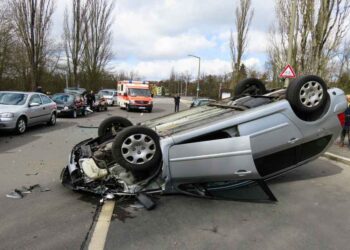Truck accidents in San Antonio are more common than you might think. In fact, Texas leads the nation in fatal truck accidents, with San Antonio being a significant hotspot. For victims, one of the most daunting challenges is proving fault to secure fair compensation. However, understanding the important role of evidence can make a substantial difference in the outcome of a claim.
This article delves into the various types of evidence that are crucial in truck accident claims and provides practical advice on how to gather and use this evidence effectively.
1. Navigating the Claims Process with a Professional
Navigating the claims process after a truck accident can be complex and daunting. Hiring a local San Antonio truck accident lawyer can help you seek your rights. An experienced attorney understands the intricacies of truck accident laws and can help you gather the necessary evidence to build a strong claim. They know where to look for evidence, how to secure it, and how to present it effectively. Moreover, they can negotiate with insurance companies on your behalf, ensuring that you receive fair compensation.
A local San Antonio truck accident lawyer will also have a deep understanding of San Antonio’s legal landscape and can provide personalized support tailored to your specific situation. Their expertise and guidance can help you navigate the legal complexities, giving you peace of mind and improving your chances of a successful claim.
2. The Importance of Immediate Action After a Truck Accident
The moments immediately following a truck accident are critical. Taking swift action can significantly impact the strength of your claim. First, ensure safety and call emergency services. Your priority should be to get medical attention for anyone injured. Once safe, start gathering information. Take photographs of the scene, the vehicles involved, and any visible injuries. Note the weather conditions, road signs, and any other factors that might have contributed to the accident. Collecting this information promptly ensures that crucial details are not lost or forgotten. The immediate aftermath is also the best time to secure eyewitness accounts, as memories can fade, and witnesses may become harder to locate later on.
3. Gathering Physical Evidence from the Scene
Physical evidence from the accident scene is invaluable. This includes vehicle damage, skid marks, debris, and even the condition of the road. Each piece of evidence can tell a part of the story of what happened. Photographs and videos are the best ways to document this evidence. Use your phone to capture multiple angles of the damage to all vehicles involved, the surrounding area, and any injuries you or your passengers sustained. If possible, measure the skid marks and note their direction and length. This physical evidence can be used by accident reconstruction experts to understand the dynamics of the crash and to establish fault.
4. The Role of Police Reports in Truck Accident Claims
One of the first steps you should take after a truck accident is to call the police. A police report is a critical piece of evidence in any accident claim. It provides an official record of the incident, including the details of the involved parties, witnesses, and the officer’s initial assessment of fault. When the police arrive, ensure you provide them with accurate and complete information about the accident. Later, obtain a copy of the police report and review it for accuracy. This report can serve as an unbiased account of the accident and can be a powerful piece of evidence when negotiating with insurance companies or presenting your case in court.
5. Eyewitness Testimonies: Power of Independent Accounts
Eyewitness testimonies can greatly bolster your claim. Independent accounts from people who saw the accident happen can provide an objective perspective that supports your version of events. When gathering eyewitness testimonies, try to get detailed statements from multiple witnesses. Ask for their contact information and if they would be willing to provide a written or recorded statement. The more detailed the eyewitness accounts, the better. These testimonies can help fill in gaps that physical evidence might not cover, such as the behavior of the truck driver before the collision. Having strong, consistent eyewitness testimonies can make a significant difference in proving fault and securing the compensation you deserve.
6. Surveillance Footage: Capturing the Incident
Surveillance footage can be a game-changer in truck accident claims. In San Antonio, many intersections and businesses are equipped with cameras that may have captured the accident. This footage provides an unbiased, real-time account of the incident, showing exactly what happened. To obtain surveillance footage, you may need to act quickly. Contact nearby businesses and traffic management authorities to request any available video evidence. Time is of the essence, as some recordings are only kept for a limited period. Having this visual proof can corroborate your account of the accident, showing factors like the truck driver’s behavior, the position of vehicles, and the sequence of events leading up to the crash.
7. Medical Records: Documenting Injuries and Treatment
Medical records are another crucial piece of evidence in truck accident claims. They provide a detailed account of the injuries sustained, the treatment received, and the long-term prognosis. After a truck accident, seek medical attention immediately, even if you feel fine initially. Some injuries, like internal damage or whiplash, may not be immediately apparent. Ensure that all your medical visits, diagnoses, treatments, and prescriptions are documented thoroughly. This medical evidence can establish a direct link between the accident and your injuries, making it harder for insurance companies to dispute your claims. Detailed medical records support your case for compensation for medical expenses, lost wages, and pain and suffering.
8. Digital Evidence: The Growing Role of Technology
In today’s digital age, technology plays an increasing role in gathering evidence for truck accident claims. Modern trucks are often equipped with electronic logging devices (ELDs), GPS systems, and onboard cameras. These digital tools can provide valuable data about the truck’s speed, braking patterns, and the driver’s hours of service leading up to the accident. Accessing this data can help establish whether the truck driver was fatigued, speeding, or violating federal regulations. Working with a legal professional who understands how to obtain and interpret this digital evidence is essential. This technological evidence can provide a precise, objective account of the truck’s operation at the time of the crash.
Conclusion
From physical evidence and police reports to eyewitness testimonies and digital data, each piece plays a crucial role in building a strong claim. By acting promptly and methodically, you can gather the necessary evidence to support your case. Additionally, engaging expert witnesses and leveraging technology can further strengthen your position. Most importantly, hiring a knowledgeable San Antonio truck accident lawyer can provide the expertise and support you need to navigate the complex claims process. With the right approach and professional assistance, you can ensure that your rights are protected and increase your chances of securing the compensation you deserve.










